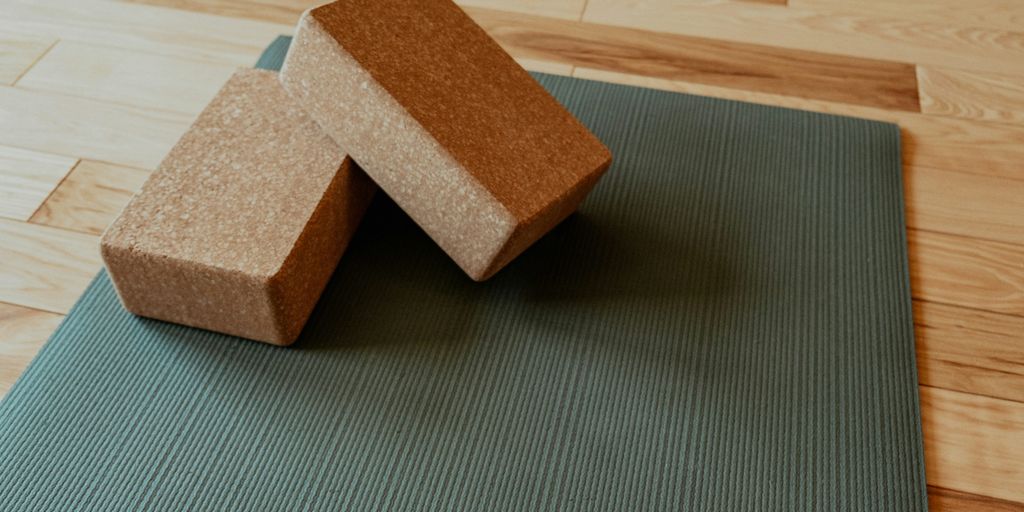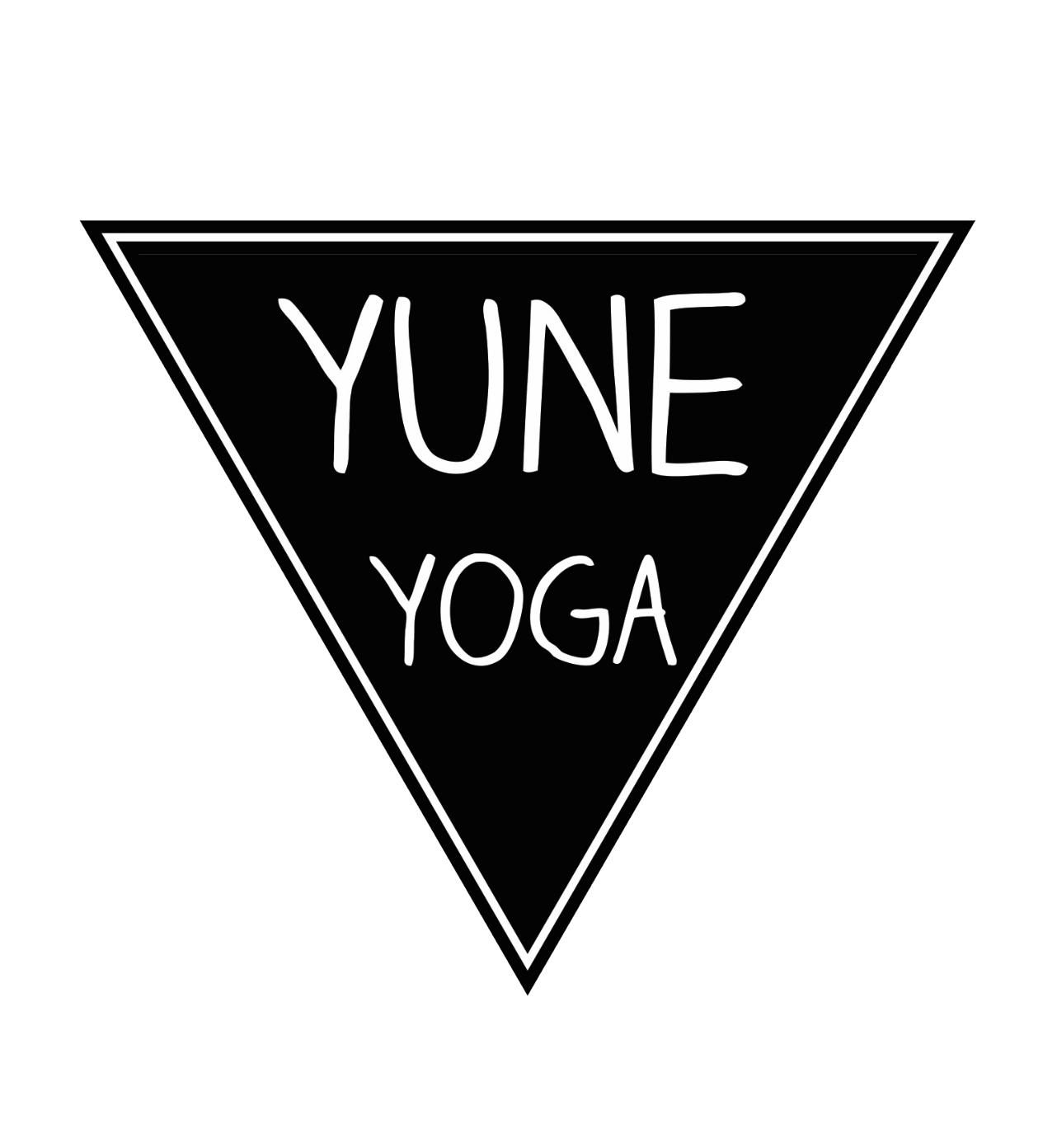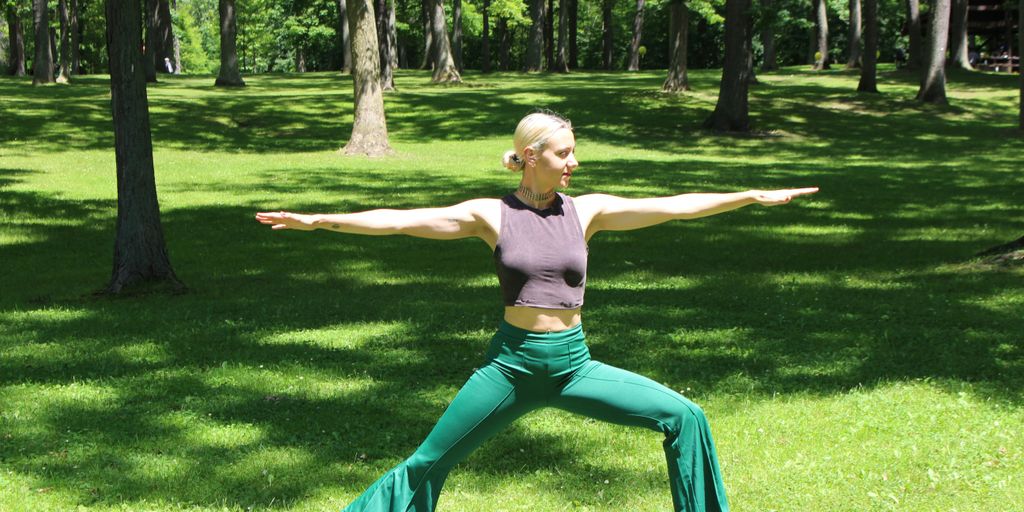
Elevate Your Practice: Discover the Benefits of Cork Yoga Blocks
So, you've seen those cork yoga blocks around, maybe at your studio or online. They look a bit different from the foam ones, right? Well, there's a good reason for that. These blocks, made from natural cork, are actually pretty awesome for anyone who does yoga, whether you're just starting out or you've been doing it for ages. They give you that extra bit of support, help you stand straighter, and can even make tricky poses a bit more doable. Let's talk about why adding cork yoga blocks to your gear might be a really good idea for your practice.
Key Takeaways
- Cork yoga blocks are made from natural, eco-friendly cork, offering a sturdy and stable prop.
- They help improve posture and alignment in various yoga poses, reducing strain.
- Cork blocks provide support for building strength and increasing flexibility safely.
- The natural texture of cork offers a non-slip grip, even during sweaty sessions, preventing slips.
- These blocks are useful for all levels, from beginners needing support to experienced yogis looking to deepen their practice.
Understanding Cork Yoga Blocks
Cork yoga blocks are a fantastic addition to any yogi's toolkit, offering a unique blend of natural qualities that support your practice. Unlike foam blocks, cork is denser and provides a firmer surface, which can be really helpful for stability. Plus, it's naturally antimicrobial, meaning it resists bacteria and odors, which is a big plus if you tend to sweat a lot during your sessions. They feel solid under your hands or feet, giving you a reliable base.
What Makes Cork Ideal for Yoga Props
Cork comes from the bark of the cork oak tree, and the best part is that harvesting it doesn't harm the tree. The bark regrows, making it a super sustainable choice. This natural material has a pleasant texture that offers a good grip, even when things get a little warm. It's also quite durable, so these blocks tend to last a long time without losing their shape or support.
Eco-Friendly and Natural Material
Choosing cork means you're opting for a product that's kind to the planet. It's a renewable resource, and the process of making cork products is generally low-impact. You won't find any harsh chemicals or synthetic materials here, just pure, natural cork. This makes them a great option if you're trying to be more mindful about the environmental footprint of your yoga gear. They're also biodegradable, which is a nice bonus.
Durability and Stability
One of the standout features of cork yoga blocks is their impressive durability and stability. They don't compress or break down easily, even with regular use. This means you can count on them to provide consistent support, whether you're using them to deepen a stretch or to help you hold a challenging pose. Their density gives them a good weight, preventing them from tipping over or sliding out from under you, which is a common issue with lighter blocks. You can really trust them to hold steady.
Cork's natural properties make it a superior choice for yoga props, offering a balance of firmness, grip, and sustainability that other materials often can't match. It's a material that supports both your practice and the environment.
Here's a quick look at why cork stands out:
- Renewable Resource: Harvested from trees without causing harm.
- Natural Grip: The texture provides a secure hold.
- Antimicrobial: Resists odors and bacteria.
- Durable: Built to withstand regular practice.
When you're looking for yoga blocks that will last and provide reliable support, cork yoga blocks are definitely worth considering. They really do make a difference in how stable and comfortable you feel in your poses.
Enhancing Your Yoga Alignment

Proper alignment is super important in yoga. It helps prevent injuries and ensures you're getting the most out of each pose. Cork yoga blocks are excellent for achieving this. They help you maintain correct form, especially in poses where you might be tempted to compromise your alignment to reach the floor. Using a block ensures you're engaging the right muscles and protecting your joints. It's like having a personal alignment coach right there with you.
Achieving Proper Form in Standing Poses
In poses like Triangle or Warrior II, placing a block under your hand can help you maintain proper alignment without straining your body. This ensures you’re not overstretching, allowing for a safer practice. For Triangle Pose, place a cork block on the outside of your front leg. Reach for the block instead of the floor to keep your spine long and aligned.
Deepening Seated Postures
For seated poses, like a forward fold, if you can't quite reach your toes, place a cork block in front of you to rest your hands on. This allows you to maintain a straighter spine, which is more important than touching your toes. Over time, as your flexibility improves, you can lower the height of the block or eventually remove it altogether. It's a slow and steady process, but it's much safer and more effective than forcing yourself into a pose you're not ready for. Plus, it helps you avoid injury and build a solid foundation for your practice. It's like having a personal assistant for your stretches, always there to lend a hand (or a block!).
Safe Modifications for Backbends
Cork blocks can also be used to safely explore backbends. For instance, in a supported bridge pose, you can place a block under your sacrum. This offers gentle support, allowing you to relax into the pose and open your chest without overextending your spine. It's a great way to build confidence and comfort in backbending movements, making them more accessible and less intimidating. Remember, it's about gradual progress, not instant perfection. You can also try placing a block between your thighs during bridge pose to really engage your inner thighs and core muscles to keep it in place. This added squeeze translates to a more intense core workout.
Building Strength and Flexibility
Cork yoga blocks are fantastic tools for building both strength and flexibility in your practice. They aren't just for making poses easier; they actually help you work your muscles in new ways.
Supporting Challenging Poses
When you're trying to get into a pose that feels just out of reach, a cork block can be your best friend. Think about poses like Triangle Pose or Warrior III. Placing a block under your hand can give you that extra bit of height needed to keep your spine long and your body stable. This support lets you focus on engaging the correct muscles, like your core, instead of just trying to reach the floor. It’s about finding stability so you can build strength in the pose, not just collapse into it.
Gradual Progression in Stretches
Flexibility doesn't happen overnight, and cork blocks help you progress safely. If you're working on a forward fold and can't quite touch your toes without rounding your back, put a block under your hands. This lets you keep your spine straight, which is way more important for building hamstring flexibility than forcing yourself to touch your feet. As you get more flexible, you can use a lower block or eventually no block at all. It’s a smart way to deepen your stretches without risking injury. You can even use them between your knees in poses like Bridge Pose to really activate your inner thighs and glutes.
Engaging Core Muscles Effectively
Want to give your core a better workout? Try this: place a cork block between your thighs during poses like Bridge Pose or even while lying on your back. Squeezing the block forces your inner thighs and your core to work harder to keep it in place. This simple addition makes a big difference in how much your abdominal muscles have to engage. It’s a small change that really ramps up the intensity of your core work.
Using a cork block in this way adds a whole new dimension to the pose, making it way harder than just doing the regular version. It's a small change, but it makes a big difference in how much your core has to work.
Here’s a simple way to use a block for core engagement:
- Place a block between your inner thighs.
- Squeeze the block gently for 30 seconds.
- Release and repeat for 5-10 rounds, focusing on keeping your hips lifted and your core tight.
This method helps you build strength and control, making your yoga practice more effective.
The Advantage of Non-Slip Grip

Maintaining Stability During Sweaty Sessions
Let's be real, sometimes yoga gets intense, and you start to sweat. It happens! When your palms get a little slick, the last thing you want is your yoga block sliding out from under you. That's where cork really shines. Unlike some other materials that can become slippery when damp, cork actually gets grippier as it absorbs a bit of moisture. This natural property means you can trust your block to stay put, even during your most vigorous flows. It's like having a little extra insurance against accidental slips, letting you focus on your breath and movement instead of worrying about your props.
Confidence in Balance Poses
Balance poses can be tricky, right? Whether you're trying to hold Warrior III or find stillness in Tree Pose, a stable foundation is key. Cork yoga blocks provide just that. Their firm density means they don't compress much under pressure, offering a solid surface to place your hands or feet. This reliable support builds confidence, allowing you to explore challenging balance postures with a greater sense of security. You'll find yourself less hesitant to try new things when you know your props won't let you down. It's amazing how much more you can achieve when you feel truly grounded.
Preventing Slips and Injuries
Ultimately, that superior grip and stability offered by cork blocks translate directly into a safer practice. When you're not worried about slipping, you can maintain proper alignment more easily. This reduces the risk of overstretching or straining muscles in awkward ways. Think about those moments in a deep lunge or a forward fold where a little extra height and a non-slip surface make all the difference. Using a cork yoga block can help you hold poses correctly for longer, which is how you build strength and flexibility without putting yourself in a vulnerable position. It’s a simple change that can have a big impact on preventing common yoga-related strains.
Versatility for All Practice Levels
Essential Support for Beginners
For those just starting out on their yoga journey, cork blocks are like a friendly guide. They help you get into poses safely and correctly, making sure you don't strain yourself. Think about poses like Triangle Pose or Warrior II. If you can't quite reach the floor with your hand, a block placed under it gives you that needed support. This means you can focus on keeping your spine long and your chest open, rather than worrying about how far you can reach. It's all about building a good foundation.
Adding Depth for Experienced Yogis
Don't think cork blocks are just for beginners! Even if you've been practicing for years, these blocks can help you explore new dimensions in your poses. They can be used to extend your reach, support tricky balances, or even add a new challenge. For instance, placing blocks under your hands in a forward fold can allow you to go deeper without rounding your back. Or, in a supported bridge pose, using blocks under your hips can offer a different kind of stretch. They're great for refining your alignment and finding new ways to engage your muscles.
Modifying Poses for Accessibility
Yoga should be for everyone, and cork blocks are fantastic tools for making poses more accessible. Whether you have tight hamstrings, limited mobility, or are recovering from an injury, blocks can be adjusted to fit your body's needs. You can use them to bring the ground closer, support your joints, or reduce the intensity of a stretch. This allows you to experience the benefits of a pose without discomfort or risk of injury. It's about adapting the practice to you, not the other way around. For example, if a simple seated forward bend is too much, placing a block under your hips can tilt your pelvis forward, making it easier to fold from the hips rather than the waist. This simple adjustment can make a world of difference in how you feel the pose and your ability to hold it comfortably. Choosing the right yoga block size is also key to this accessibility.
Using a cork block can really transform your yoga experience. It's not just about making poses easier; it's about deepening your understanding of your body and your practice. It's about finding that sweet spot where you're challenged but not overstretching. It's all about gradual progress, not instant perfection.
Incorporating Cork Blocks in Restorative Yoga
Restorative yoga is all about slowing down and letting your body find a place of deep ease. Cork yoga blocks are fantastic for this because they offer just the right amount of support without being too hard or too soft. They help you relax into poses, allowing your muscles to let go of tension.
Gentle Support for Relaxation
When you're practicing restorative poses, the goal is to hold the shape for a longer period, letting gravity do the work. A cork block placed under your hips in Supported Bridge Pose, for instance, can take the pressure off your lower back and allow your chest to open gently. It’s like giving your body a soft, stable cushion to rest on, which really helps in achieving a state of calm.
Enhancing Comfort in Supported Poses
Think about poses like Supported Child's Pose or Legs-Up-the-Wall. Placing a block under your forehead or hips can make these shapes much more comfortable, especially if you have tight hips or a sensitive lower back. This added comfort means you can stay in the pose longer, which is key for the relaxation benefits of restorative work. It’s about finding that sweet spot where you feel supported but not strained.
Promoting Deep Release of Tension
Using cork blocks in restorative sequences can really help you access deeper layers of relaxation. For example, in a supported reclining bound angle pose, placing blocks under your knees can ease any strain in your hips and groin. This allows your body to fully surrender into the pose, promoting a release of stored tension in areas you might not even realize were holding it. It’s a simple way to get more out of your restorative practice, making it a truly rejuvenating experience. Using a firm yoga block can make a big difference in how deeply you can relax.
Wrapping It Up
So, there you have it. Cork yoga blocks are pretty great tools, whether you're just starting out or you've been doing yoga for ages. They help you get your poses right, build up your strength, and get a bit more flexible, all while keeping things safe. They’re made from natural cork, which is good for you and the planet. Think of them as your reliable yoga buddy, always there to give you that little bit of extra support you need. Give them a try and see how they can make your yoga sessions even better.
Frequently Asked Questions
What makes cork yoga blocks special?
Cork yoga blocks are made from the bark of cork trees, which is a natural and renewable resource. This makes them a great choice for people who care about the environment. They are also light, sturdy, and provide a good grip, even when you start to sweat.
How do cork blocks help with yoga poses?
Cork blocks are super helpful for getting your body in the right position during yoga. For instance, in poses like Triangle Pose, placing a block under your hand helps you keep your back straight and prevents you from leaning too far, which is safer and helps you feel the stretch better.
Can cork blocks help me get stronger and more flexible?
Yes, absolutely! Cork blocks are fantastic for building strength and becoming more flexible. They give you the support you need to hold challenging poses longer or to reach a little further in stretches. Think of them as a helpful tool that lets you safely improve your body's capabilities.
Why is the grip of cork blocks so important?
Definitely! Cork has a natural texture that offers a really good grip. This means that even if your hands get sweaty during a hot yoga session, the block won't slip out from under you. This gives you more confidence and stability, especially in balancing poses.
Are cork yoga blocks only for beginners?
Cork blocks are great for everyone, no matter how long you've been doing yoga. Beginners can use them to make poses easier to get into and to ensure they're practicing with good form. More experienced yogis can use them to try new variations of poses or to deepen their stretches.
How can I use cork blocks for relaxing yoga poses?
Yes, they are wonderful for relaxing poses. You can place them under your back in poses like Supported Bridge Pose to gently lift your hips, or under your knees in seated poses to help you relax more comfortably. They provide soft support that helps your body release tension.

